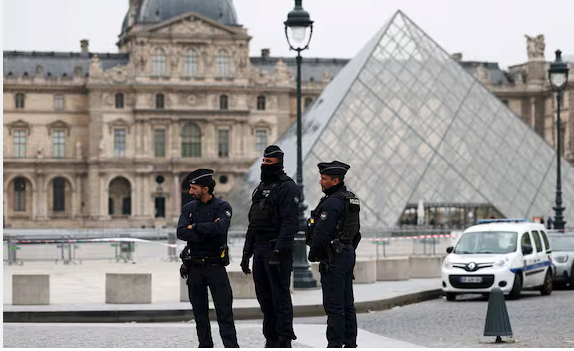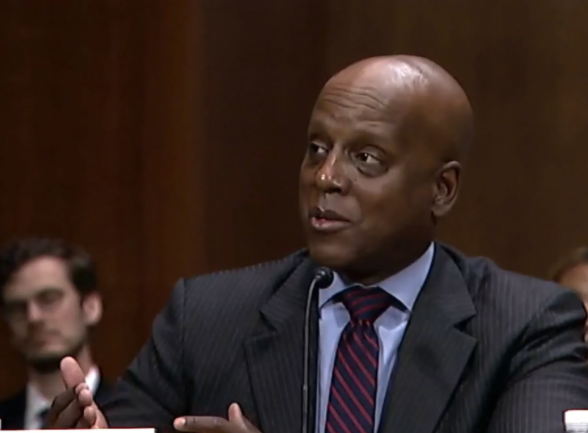A federal judge in Chicago just made a decision that’s raising eyebrows — and not just among immigration officers.
In a move that’s already stirring debate nationwide, U.S. District Judge Jeffrey Cummings ruled that ICE agents — yes, federal officers — can be arrested if they take migrants into custody at Cook County courthouses without a proper warrant. Let that sink in for a second.
Federal law enforcement officers. Arrested. For making arrests.
Chicago-Area Judge Rules ICE Agents Can Be Arrested at Courthouses.
🚨 Chicago Judge Says ICE Can’t Arrest People at Courthouses
U.S. District Judge Jeffrey Cummings
just made a big decision: ICE agents are no longer allowed to arrest people at courthouses. That includes… pic.twitter.com/DrHe8USeQ3— Alexander News Show (@AlexanderNewsSh) October 21, 2025
And if you think that sounds backwards, you’re not alone.
According to the judge’s order, ICE — Immigration and Customs Enforcement — is no longer allowed to detain individuals at courthouses unless they have an official warrant in hand. Not a tip. Not a lead. Not an ID check that turns something up. A signed warrant. Without it, even if they discover someone is in the country illegally, they can’t make an arrest — and if they do, they could be the ones in cuffs.
This isn’t just legal technicalities. This is a seismic shift in how immigration enforcement happens — and where.
The focus of the judge’s order is on what’s known as “collateral arrests.” That’s when ICE officers go looking for someone they do have a warrant for, but stumble across another individual who’s also in the U.S. illegally. In the past, agents could take that person into custody, too. Under this ruling? Not anymore — at least not in or around courthouses in Cook County, which includes Chicago.
Judge Cummings claims this is all about safety and access to justice. His reasoning? Courthouses should be “safe spaces” where people — even those who are undocumented — feel comfortable showing up. Whether it’s to testify, face charges, or handle civil matters, the judge says migrants should be able to come and go without fear of being detained by ICE.
🚨District court judge issued one of the most egregious immigration rulings I’ve ever seen.
This is a judicial coup. This is a ruling that President Trump should IGNORE. It will not stand. pic.twitter.com/avxZQr5MFC
— Scott Jennings (@ScottJenningsKY) April 30, 2025
He even referenced cases where U.S. citizens were allegedly detained in error by ICE during these operations — and detained “in zip ties,” no less — suggesting that ICE’s behavior wasn’t just overzealous, it was unlawful.
The Department of Homeland Security, meanwhile, didn’t exactly roll over.
DHS issued a sharp response, saying it will comply with legal court orders — as it always does — but also made it clear they don’t agree with the logic. In a firm statement, DHS reminded the public that we’re not living in a “medieval kingdom,” and there are no “sanctuary zones” carved out in the Constitution where someone who broke the law gets a free pass just because of where they’re standing.
“If someone breaks the law,” DHS said, “there’s nothing in the Constitution that says we can’t arrest them where we find them.”
It’s a fair point. After all, imagine any other law enforcement agency being told it can’t make an arrest in a public place just because it might make someone nervous. Would we say police can’t detain a robbery suspect outside a bank? Should U.S. Marshals wait outside until it’s more convenient to serve a warrant?
This ruling doesn’t just slow down ICE — it sets a precedent that could ripple across the country.
It opens the door for every activist lawyer and sanctuary city advocate to claim more “no-go” zones for immigration enforcement. First courthouses. What’s next? Hospitals? Schools? DMV lines?
So, who’s actually in charge here — federal law enforcement… or local judges?
And if ICE agents can be arrested for doing their jobs, what kind of message does that send to those who aren’t even supposed to be here in the first place?
Because one thing is certain: this fight isn’t over.




